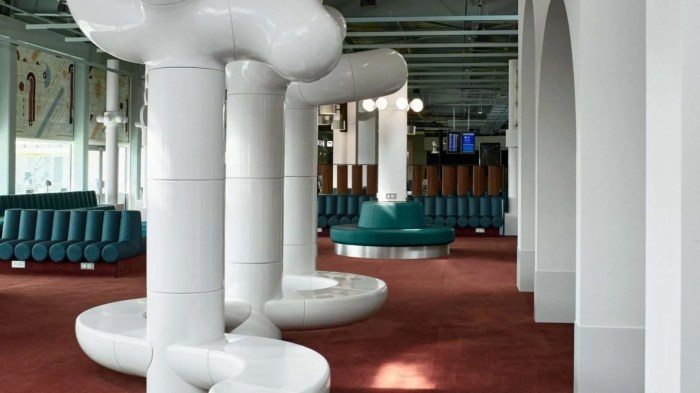Learning from Brodsky: Building Beautiful Public Spaces
Delving into Learning from Brodsky: Building Beautiful Public Spaces, this introduction immerses readers in a unique and compelling narrative. From exploring Joseph Brodsky's innovative design principles to the transformative impact on urban planning, this topic showcases the intersection of art and functionality in public spaces.
The incorporation of natural elements, community engagement, and sustainable practices will be discussed in detail, providing a comprehensive view of how Brodsky's vision has shaped public spaces around the world.
Introduction to Joseph Brodsky’s Approach

Joseph Brodsky was known for his innovative approach to designing public spaces, focusing on blending beauty with functionality. His key principles emphasized the importance of creating spaces that were not only visually appealing but also served the needs of the community.
Brodsky's work had a profound impact on urban planning and architecture, setting a new standard for how public spaces could enhance the quality of life for residents and visitors alike.
Key Principles of Brodsky’s Design
- Balancing aesthetics with functionality to create harmonious spaces.
- Prioritizing the user experience and ensuring accessibility for all.
- Incorporating elements of nature and greenery to enhance the environment.
- Emphasizing the cultural and historical significance of the space in the design.
Impact on Urban Planning and Architecture
- Brodsky's vision challenged traditional notions of public space design, inspiring a new wave of creativity in urban planning.
- His approach influenced the development of sustainable and inclusive urban landscapes that catered to diverse community needs.
- Architects and city planners began to prioritize the aesthetic and social value of public spaces, thanks to Brodsky's transformative work.
Transformation of Public Spaces
- By incorporating Brodsky's principles, public spaces evolved into more inviting, engaging, and dynamic environments.
- His vision transformed neglected areas into vibrant community hubs that fostered social interaction and cultural exchange.
- Brodsky's focus on beauty and functionality set a new standard for public space design, inspiring future generations to prioritize the well-being of individuals in urban environments.
Incorporating Nature in Public Spaces
Integrating natural elements in public spaces plays a crucial role in creating environments that are not only visually appealing but also beneficial for the well-being of the community.
Greenery in Public Spaces
Joseph Brodsky believed in the power of greenery to enhance public spaces. He often incorporated lush gardens, trees, and plants in his designs to create a sense of tranquility and connection to nature.
Water Features for Serenity
Brodsky's designs frequently included water features such as fountains, ponds, or streams. These elements added a calming effect, attracting visitors and providing a peaceful ambiance in the bustling urban environment.
Natural Light for Sustainability
Natural light was a key component in Brodsky's approach to designing public spaces. By strategically placing openings, skylights, and reflective surfaces, he maximized the use of natural light, reducing the need for artificial lighting and promoting energy efficiency.
Benefits of Nature Integration
- Enhanced aesthetic appeal and visual interest
- Improved air quality and overall environmental health
- Opportunities for relaxation and stress reduction
- Promotion of physical activity and community engagement
- Creation of sustainable and eco-friendly spaces
Community Engagement and Participation
Community engagement was a cornerstone of Joseph Brodsky's approach to building beautiful public spaces. By involving local communities in the design process, he ensured that the spaces truly reflected the needs and desires of the people who would use them.
Examples of Successful Community-Driven Projects
- In the redesign of a city park, Brodsky organized community workshops where residents could share their ideas and preferences for the space. This led to the creation of a park that was not only aesthetically pleasing but also functional and welcoming to all.
- Another successful project inspired by Brodsky's approach was the transformation of a vacant lot into a community garden. Local residents were actively involved in planning and planting, fostering a sense of ownership and pride in the space.
Significance of Community Engagement
Engaging the community in the design and development of public spaces is crucial for creating inclusive and vibrant environments. When people have a say in how their surroundings are shaped, they are more likely to feel connected to the space and take care of it.
This sense of ownership leads to increased usage and enjoyment of public areas, ultimately benefiting the entire community.
Sustainable Design Practices
Joseph Brodsky was a strong advocate for sustainable design practices in his public space projects, emphasizing the importance of creating environmentally-friendly and energy-efficient spaces.
Use of Eco-Friendly Materials
Brodsky incorporated eco-friendly materials such as reclaimed wood, recycled metal, and sustainable bamboo in his designs. These materials not only reduced the environmental impact of construction but also added a unique aesthetic appeal to the public spaces.
Energy-Efficient Solutions
- Implemented energy-efficient lighting systems using LED technology to reduce electricity consumption.
- Integrated solar panels to harness renewable energy sources and decrease reliance on non-renewable resources.
- Utilized natural ventilation and shading techniques to reduce the need for artificial heating and cooling.
Green Technologies
- Installed green roofs to improve insulation, reduce heat island effect, and promote biodiversity in urban areas.
- Implemented rainwater harvesting systems to collect and reuse water for irrigation and other purposes, reducing water consumption.
- Introduced permeable pavements to minimize stormwater runoff and enhance groundwater recharge, reducing the strain on municipal drainage systems.
Long-Term Benefits
By incorporating sustainable design practices, Brodsky's public spaces not only reduced their environmental footprint but also offered long-term benefits to the community and the environment. These include improved air quality, reduced energy costs, enhanced biodiversity, and a healthier urban environment for residents and visitors to enjoy.
Closing Summary

In conclusion, Learning from Brodsky: Building Beautiful Public Spaces underscores the importance of thoughtful design, community involvement, and sustainable practices in creating aesthetically pleasing and functional public spaces. By drawing inspiration from Brodsky's approach, we can strive to make our cities more livable, inclusive, and environmentally conscious.
Detailed FAQs
How did Brodsky involve local communities in his design process?
Brodsky often held community workshops and consultations to gather input and feedback on his public space projects, ensuring that they reflected the needs and desires of the people who would use them.
What are some examples of sustainable design practices Brodsky implemented?
Brodsky incorporated eco-friendly materials, energy-efficient solutions, and green technologies in his designs to promote sustainability and reduce environmental impact.
Why is it important to integrate nature in public spaces?
Integrating natural elements like greenery, water features, and natural light enhances the aesthetics of public spaces, creates a sense of tranquility, and promotes environmental sustainability.



